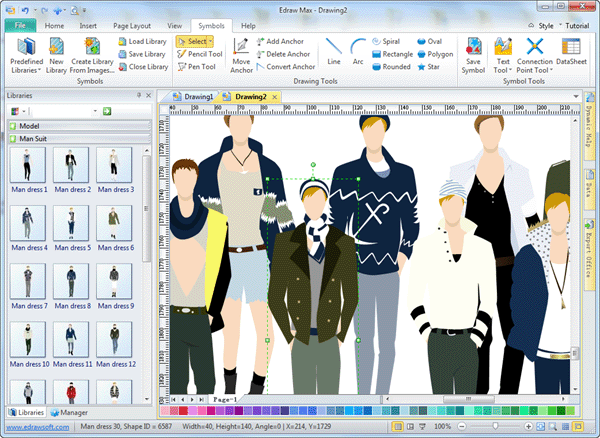

Is fashion design a career I should pursue? Adobe Illustrator is a must-have for any illustrator.
SKETCH FASHION DESIGN SOFTWARE SOFTWARE
Ned Graphics, Kaledo, and Color Matters are the three major fashion design software providers. With the help of Adobe Illustrator, it is one of the most widely used design programs. It is especially important if you want to work from home as a freelancer. Drawing skills in digital format are essential. It is extremely rare in the fashion industry to photograph oneself using a hand sketching device. These programs allow for more precise line work and color choices, and can be helpful for designers who want to create digital versions of their sketches. Finally, some designers prefer to sketch using a computer program like Adobe Illustrator or Photoshop.

Markers come in both water-based and alcohol-based varieties, and a wide range of colors and tones. Markers are another option for sketching, and are often used by designers who want to add a bit of color to their sketches. Like pencils, pens come in a variety of widths and hardness, which will affect the thickness of the line. Pens are also popular sketching tools, especially among designers who prefer a more precise line. Pencils come in a range of hardness, from very soft (B) to very hard (H), which affects the thickness of the line they produce. pencils are the most basic tool for sketching and are often used by designers to quickly capture an idea before moving on to more detailed rendering. No matter the medium, sketching is an essential part of the design process, allowing designers to visualize their creations and communicate their ideas to others. Add facial details, a hairstyle and accessories to complete the look.Fashion designers use a variety of tools to sketch their ideas, from simple pencils and paper to more sophisticated computer-aided design (CAD) programs. Add embellishments to the fabric to demonstrate your own style. Colour in the fashion drawing to add dimension. Shade the design to show the movement of the fabric or to highlight where material gathers on the garment. Now that the fashion figure is sketched, you can begin to build your design creations on top of the figure. The feet should be approximately the length of the head. The arms can be positioned alongside the figure’s body or posed on the hips. Create the arms with tapered lines to the elbow and then again to the wrist. Taper the line down to the knee, and again to the ankle so that the ankles are approximately one fourth the size of the head.

The top of the thighs should span the same length as the head. The legs are portioned into two sections: the thighs and the calves. The figure’s legs should be approximately four times the length of the head drawn. Draw a circle for the head in proportion to the body. The neck should be one-third of the shoulder width, and half the length of the head. The shoulders should be approximately the same width as the pelvis, but the shoulder lines can be angled to create a pose that is rounded forward. The lines curve inward and outward again to create the waist. Draw two lines upward from the top of the pelvic square to create the torso. This can be angled in different directions to create different poses. In the middle of the balance line, draw a square for the fashion figure’s pelvis. You can draw horizontal lines, approximately an inch and one-eighth each, to separate the nine sections. The nine sections will include the fashion figure’s head, bust, waist, hips, thigh, calves, ankles, and feet. Separate the paper into nine equal sections.This line, which stretches from the head to the feet, will be the fashion figure’s center of balance. Draw a vertical line down the center of the paper.


 0 kommentar(er)
0 kommentar(er)
